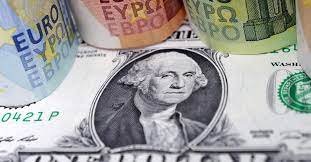The US dollar weakened sharply following disappointing jobs data and Federal Reserve Chair Jerome Powell’s recent comments on monetary policy. The unexpected slowdown in job growth has fueled speculation that the Fed may pivot towards interest rate cuts sooner than anticipated. This shift has sent ripples through financial markets, impacting forex traders, investors, and policymakers alike.
US Jobs Data Falls Short of Expectations
The Key Numbers
Recent labor market data revealed that US job growth in the latest report was significantly below expectations, raising concerns about the strength of the economy. Key takeaways include:
- Lower-Than-Expected Job Growth: The economy added fewer jobs than analysts predicted.
- Unemployment Rate Fluctuations: The jobless rate saw a slight increase, suggesting a cooling labor market.
- Wage Growth Slows: Slower wage growth signals reduced inflationary pressure.
Market Reactions
The disappointing jobs report led to immediate market reactions:
- US Dollar Decline: The dollar weakened against major currencies.
- Stock Market Gains: Weaker jobs data increased hopes for rate cuts, boosting equities.
- Bond Yields Drop: Treasury yields fell as investors priced in a looser monetary policy.
Powell’s Comments Add to Market Uncertainty
Key Takeaways from Powell’s Remarks
Federal Reserve Chair Jerome Powell acknowledged the labor market slowdown, reinforcing expectations that the Fed may shift its stance on interest rates. His key statements included:
- Acknowledgment of Economic Cooling: Powell noted signs of a softer job market.
- No Immediate Rate Cuts, But Open to Changes: He reiterated the Fed’s data-driven approach but suggested rate adjustments if conditions warrant.
- Inflation Considerations: While inflation has cooled, Powell emphasized the need for further progress before making policy shifts.
Market Interpretation
Powell’s balanced tone left investors speculating on future moves. Markets reacted by:
- Pricing in Rate Cuts: Traders increased bets on rate cuts in the coming months.
- Forex Market Volatility: The dollar fluctuated as traders digested Powell’s stance.
Global Currency and Economic Implications
How Major Currencies Reacted
The US dollar’s weakness had a notable impact on major global currencies:
- Euro Gains: The euro strengthened as traders moved away from the dollar.
- Yen Rises: Japan’s yen appreciated as investors sought safer assets.
- Emerging Market Currencies Benefit: Currencies like the Mexican peso and Brazilian real saw upward movement.
Broader Economic Impact
- Import and Export Shifts: A weaker dollar makes US exports more competitive but raises the cost of imports.
- Commodity Price Movement: Gold and oil prices saw fluctuations due to changing dollar strength.
The Federal Reserve’s Dilemma
Balancing Growth and Inflation
The Federal Reserve is in a challenging position as it tries to balance economic growth with inflation control. Cutting interest rates too soon could reignite inflation, while maintaining higher rates for too long could slow economic growth and increase unemployment.
The Risk of a Recession
Some analysts believe that if the labor market continues to weaken, the risk of a mild recession increases. A slower job market often leads to reduced consumer spending, affecting overall economic momentum.
Fed’s Next Steps
The Fed has emphasized a data-dependent approach, meaning that future policy decisions will be guided by upcoming economic reports. If inflation continues to cool and job numbers remain weak, a rate cut could come sooner than expected.
Impact on Consumers and Businesses
What This Means for Borrowers
- Lower Mortgage Rates: If the Fed cuts rates, homebuyers may see lower mortgage rates, making homeownership more affordable.
- Cheaper Auto Loans and Credit Cards: Interest rates on loans and credit cards could decrease, reducing borrowing costs.
- Lower Savings Rates: On the downside, savings account interest rates may decline.
How Businesses Are Affected
- Cheaper Business Loans: Companies may benefit from lower borrowing costs.
- Improved Stock Market Performance: Rate cuts generally lead to stock market gains, benefiting investors.
- Pressure on Small Businesses: Some small businesses may struggle with changing economic conditions, particularly if consumer spending slows.
What’s Next for the US Dollar?

Factors to Watch
- Upcoming Economic Reports: Inflation and retail sales data will influence market expectations.
- Federal Reserve’s Next Meeting: Any hints of a policy shift will impact the dollar.
- Geopolitical Developments: Global events could add volatility to currency markets.
Expert Predictions
Analysts remain divided on the dollar’s future trajectory. Some expect further weakening if the Fed signals a rate cut, while others believe global economic uncertainty could support demand for the dollar as a safe-haven currency.
Conclusion
The US dollar’s decline following weaker jobs data and Powell’s comments highlights the delicate balance the Fed must maintain in managing economic growth and inflation. As traders and investors look ahead, all eyes remain on future economic indicators and central bank decisions to gauge the dollar’s next move. With the potential for rate cuts increasing, the financial landscape may see significant shifts in the coming months.






